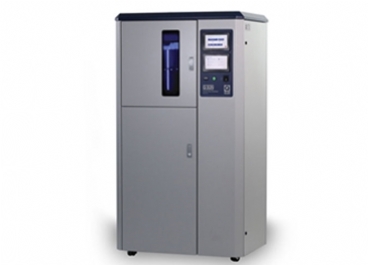耐候性试验 Weathering Testing
欢迎来到耐候性试验网!
咨询热线
18566398802AATCC 125-2004标准详情
AATCC 125-2004测试标准
本页面标准信息只作为参考使用。更多AATCC 125-2004标准细节信息或AATCC 125-2004测试方法,欢迎致电【400-6808-138】。
-> AATCC 125-2004标准介绍
-> 符合AATCC 125-2004的仪器
-> AATCC 125-2004标准介绍
-> 符合AATCC 125-2004的仪器
AATCC 125-2004标准介绍
耐光汗色牢度:
本方法旨在测定染色纺织试样在汗渍溶液和光曝晒复合作用下对色牢度的影响。因此,此测试中仅使用汗渍溶液。
原理:待测的染色试样浸入汗渍溶液中一定时间,立即在耐光色牢度仪中曝晒一定时间。
AATCC 125-2004 是一个由美国纺织化学师与印染师协会 (AATCC) 制定的标准测试方法,用于评估纺织品的耐光汗色牢度(Light and Perspiration Fastness)。此测试方法主要用于衡量纺织品在同时受到光线照射和汗水作用下的颜色稳定性。
以下是 AATCC 125-2004 的简要中文概述:
AATCC 125-2004 耐光汗色牢度
目的与应用:本测试方法用于评估纺织品在模拟日光和人工汗液共同作用下颜色的变化程度。它可以帮助制造商和生产商了解其产品在实际穿着条件下的表现,特别是在阳光暴晒和出汗的情况下。
原理:通过将纺织品样品暴露在特定的光照条件下,并同时让它们接触到模拟的人工汗液。
这种测试可以模拟日常生活中可能会遇到的情况,比如户外活动时衣物受到阳光照射和汗水的作用。
测试设备:
模拟日光的光源:如氙弧灯或紫外线灯。汗液模拟溶液:按照特定配方配制的人工汗液。温度和湿度控制装置:确保测试环境符合要求。
测试步骤:
准备好测试样品,并记录初始颜色。将样品暴露在光源下,并同时接触汗液模拟溶液。
在规定的时间内保持样品处于测试条件下。
暴露结束后,评估样品的颜色变化。
评估方法:
使用灰卡或其他标准化色牢度评价系统来比较暴露前后的颜色差异。
评估通常基于颜色变化的程度和均匀性。
报告:
报告应包括测试条件、样品描述以及颜色变化的结果。
需要注意的是,具体测试方法和程序可能包含更多的技术细节和要求。如果您需要详细的测试指南或者具体的测试步骤,请参考正式发布的 AATCC 125-2004 标准文档。此外,随着时间的发展,AATCC 可能会对这些标准进行更新,因此最新的版本可能与 2004 版有所区别。例如,您提到的 AATCC 125-2004 版本,但也有资料提到了 2009 年版本的更新。如果需要最新的测试标准,建议查询最新的 AATCC 125 版本。
